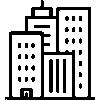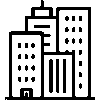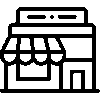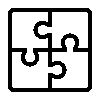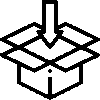- Products
- Platform
- Solutions
- Customers
- Support
- Pricing
 Website & Mobile & E-commerce
Website & Mobile & E-commerce
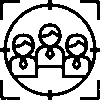 CRM
CRM
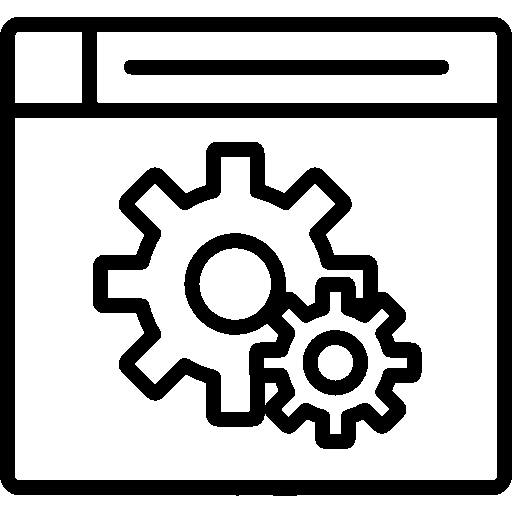 Operation & ERP
Operation & ERP
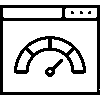 Productivity
Productivity
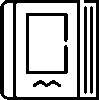 Support
Support
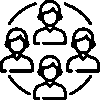 Community
Community
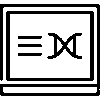 Learn
Learn
Application Support Point

Manage your inbound and outbound return orders from your business partners or customers.
- Version History
- Application Features
- User Manual
- FAQ
- Community
Definition
Return Orders application is a software used to track, process and manage return requests from customers. This application provides the necessary tools to run returns processes in an orderly and efficient manner, helping to provide better service to customers.
Aim
The purpose of the Return Orders application is to facilitate and keep the return management process under control by processing return requests quickly, organized and effectively in order to increase customer satisfaction and optimize business processes.
Key Benefits
- It enables businesses to process their return requests more quickly and effectively by ensuring that return processes are managed through a central platform.
- It increases customer satisfaction by facilitating return processes and providing quick solutions.
- It offers a user-friendly interface to trackall return orders, check their status, and intervene when necessary.
- It provides decision support mechanisms to businesses by ensuring that data regarding return transactions are recorded and reported regularly.
- It reduces manual errors and losses thanks to automated processes.
- It supports inventory management by ensuring that returned products have a direct impact on inventory status.
- It helps businesses optimize their return policies by providing the ability to analyze statistics and trends regarding return orders.
- It reduces operating costs by managing return processes more efficiently.
- Easy processing and tracking of return requests contribute to improving overall business processes.
- It enables fast and effective communication with customers about the returns process, thus increasing transparency throughout the returns process.
Entrance
This is the home screen of the Return Orders application.

Incoming Returns
Incoming Returns are divided into four categories: Open Returns, Closed Returns, Cancelled Returns, All Orders, and Deleted Orders.
Open Returns are divided into four stages: Pending, Rejected, and Approved.

On the Open Returns screen, Direction, Return Code, Supplier, Customer, Return Amount, Shipped , Remaining Amount, Payments Made, Price, Date information is listed.
Closed Returns

On the Closed Returns screen, Direction, Return Code, Supplier, Customer, Return Amount, Shipped , Remaining Amount, Payments Made, Price, Date information is listed.
Cancelled Returns

Direction, Return Code, Supplier, Customer, Return Amount, Shipped, Remaining Amount , Payments Made, Price, Date information is listed on the Cancelled screen.
All Orders

Direction, Return Code, Supplier, Customer, Return Amount, Shipped , Remaining Amount, Payments Made, Price, Date information is listed on the All Orders screen.
Deleted Orders

On the Deleted Orders screen, Direction, Return Code, Supplier, Customer, Return Amount, Shipped , Remaining Amount, Payments Made, Price, Date information is listed.
Outgoing Returns
Outgoing Returns are divided into four categories: Open Returns, Closed Returns, Cancelled Returns, All Orders, and Deleted Orders.
Open Returns are divided into four stages: Pending, Rejected, and Approved.

On the Open Returns screen, Direction, Return Code, Supplier, Customer, Return Amount, Shipped , Remaining Amount, Payments Made, Price, Date information is listed.
Closed Returns

On the Closed Returns screen, Direction, Return Code, Supplier, Customer, Return Amount, Shipped , Remaining Amount, Payments Made, Price, Date information is listed.
Cancelled Returns

Direction, Return Code, Supplier, Customer, Return Amount, Shipped, Remaining Amount , Payments Made, Price, Date information is listed on the Cancelled screen.
All Orders

Direction, Return Code, Supplier, Customer, Return Amount, Shipped , Remaining Amount, Payments Made, Price, Date information is listed on the All Orders screen.
Deleted Orders

On the Deleted Orders screen, Direction, Return Code, Supplier, Customer, Return Amount, Shipped , Remaining Amount, Payments Made, Price, Date information is listed.
Indicators
This is the screen where the application's indicators are displayed.

Settings
The settings document can be accessed via the relevant menu.
Please click for related content.
General Information
This is the screen where the order record is defined.


To add a return order record, enter the following information: Supplier, Orderer, Business Partner, Direction of Movement, Invoice Type, Cancellation Reason, Return Date, Time, Payment Method, Payment Status, Language, Sales Representative, Forum Manager, Description, Fixed Field. After all transactions are completed, click the Save button to save.
Return Summary
This is the screen where the return summary is displayed.


The return summary screen includes Order Information, Other Information, Transfer Information, Product Code / Name, Brand, Unit Price, VAT Refund Amount, Shipped, Remaining Amount, Price Information.
General Information
This is the screen where general information is displayed.


In the general information screen, Supplier, Customer, Direction of Movement, Invoice Type, Return Reason, Return Date, Payment Method, Payment Status, Language, Sales Representative, Form Manager, Description, Order Rates, Default Price, Order Currency, and Fixed Field information can be edited.
Discounts
This is the screen where discounts are displayed.

On the Discounts screen, Customer Discounts and Return Discount information is edited. After all transactions are completed, they are saved by pressing the Save button.
Return Items
This is the screen where Return Items are displayed.

The Return Items screen includes Product Code / Name, Brand, Unit Price, VAT, Return Quantity, Remaining Quantity Shipped and Price information. In the Transactions menu, Add New Item (Classic), Add New Item (Quick), Add New Item (Barcode) operations are performed.

To add a new item, select Group, Category, Product. The selected product is added.
Payments
This is the screen where payments are displayed.

Payment Method on the Payments screen, History, Explanation, Enter the amount information. Click the Add New Payment button to add the payment.

To add a payment, connect to the Cashier, Bank, Check, POS, Coupon, Advance, Credit Payments applications and enter payment information.
General Settings
General Settings

Stages are added to return orders using the Stage Feature.
The status property is defined for the added stages using the Status Property.
If the company has more than one company, the application can be separated according to my companies.
If the company has more than one branch, its records can be separated by branch.
The supplier feature is available.
Order via Business Partner
Show current information in customer selection
Risk analysis is performed using Risk Management.
You can select the warehouses to be taken into account in the new order.
The default Sort is selected as Order Date or Closing Date.

Mandatory Order Information
Supplier and Return Reason can be selected
Email Sending Settings
The e-mail sending feature can be used.
An e-mail can be sent automatically when the stage changes.
Price Settings
Price Lists are available.
The default product price to be used in the application can be selected.
Default price can be selected when ordering.
Payments can be shown in the List.
Pen Settings
The number of items in the box can be adjusted.
Language Options
This is the screen where language options are set.

Multi-language support is available. Languages to be used are Turkish, English, French, Spanish or Arabic.
The default language is selected and saved.
Stage Definitions
Definitions are created for Return Order stages. These stage definitions make it easier to track return orders by showing which stage the return orders are at.

The Phase Definitions screen lists the Color, Phase Name, and properties.
A stage is added by pressing the Add New Stage button.

To add a stage definition, Stage Information and Stage Options information is entered. After all operations are completed, the Save button is pressed to save. The stage is edited by clicking on the added stage.
-General Information

In the General Information screen, Stage Name, Description, Order and Stage Options are edited.
-Stage Color

A color representing the stage is selected. The color representing the stage allows records to be easily separated in the lists according to their stages and status.
-User Authorizations

The user can see the records at this stage, receive notifications, make stage changes, and is given authorizations that are selected according to preference.
Authorized Users

The authorized users' Name and Surname information is listed on the authorized users screen. By clicking on the authorized user, stage authorizations are edited.
-Editing Stage Authorizations

Authorization is granted to the authorized user at each stage to edit the stage authorizations. After all operations are completed, they are saved by pressing the Save button.
Reason For Return
This is the screen where the reasons for return are displayed.

On the return reasons screen, Title and Order information is entered. The return reason is added by pressing the Add New button.
I 
To add a return reason, enter the Title information.
Reason For Cancellation
This is the screen where the cancellation reasons are displayed.

Title and Order information is displayed on the cancellation reason screen. The cancellation reason is added by pressing the Add New button.
I 
To add a cancellation reason, enter the Title information.
Mail Form Settings
This is the screen where the Mail Form settings are displayed.

The Mail Form settings screen includes the Mail Form, Form Key, and Mail Account information. Editing is done by clicking on the mail form.

On the editing screen, Mail Account, Mail Template, Copy Recipients, Blind Copy Recipients, Mail Sending Status information is edited. After all operations are completed, it is saved by pressing the save button.
Fixed Fields
This is the screen where fixed areas are displayed.

On the fixed fields screen, Title and Order information is entered. A fixed field is added by pressing the Add New button.

To add a fixed field, enter the Field Label, Field Title, Field Text, Default for incoming returns, Default for outgoing returns, and Order information. After all operations are completed, click the Save button to save.
Discount Settings
This is the screen where the discount settings are displayed.

By using product discounts, it ensures that the discounts defined for the products are valid on the orders.
Using customer discounts ensures that discounts defined for customers are valid on orders.
By using business partner discounts, it ensures that the discounts defined for business partners (dealers, services, suppliers, etc.) are valid on orders.
Provides the opportunity to specify under-invoice discounts using under-invoice discounts.
Uses cumulative discounts to apply the total discount to the order amount: 50% + 20% = 70% discount, etc. If not selected, the discounts are applied one after the other: Example; 50% \\\\&rarr 20% = 60%
Payment Method
This is the screen where payment methods are displayed.

Payment Methods are divided into seven as Cash, Wire Transfer / EFT, Credit Card, Cash on Delivery, Promissory Note, Check, Premium, Letter of Credit (Agreditive), Western Union, Current, Credit Accounts. Preferred ones are selected and saved.
Automatic Numbering
Automatic Numbering allows a certain field to automatically increase with each new record.

Fill in the Prefix and Suffix fields as desired or leave them blank.
Give a starting value to the Auto-Increment Number field. For example, if you give 1000, the following numbers will go as 1000, 1001, 1002...
When a value is entered, a preview is displayed on the right for information purposes.
Authorized Users
Having certain authorities in the company is an important element that increases organizational efficiency and workflow. Authorization ensures a clear distribution of tasks and responsibilities.

On the Authorized Users screen, users are given the required authorizations and saved.
Filtering Settings
Filtreleme ayarları, bir sistemde veya uygulamada belirli kriterlere göre verileri sınıflandırmak için kullanılır. Bu ayarlar, kullanıcıya yalnızca ilgili veya uygun içerikleri sunmaya yardımcı olur.

Filtreleme ayarları ekranında Tarih AralığıAşama, İade Nedeni, Tedarikçi/ Müşteri, Müşteri Tipi, Form Sorumlusu, Satış Temsilcisi, Ödeme Tutan Durumu, Grup, Kategori, Ürün Ara, Tedarikçi, Müşteri alanları seçilerek filtreleme yapılır.
Sıralama; Sipariş Tarihi seçerek sıralama yapılır.
Questions
Ask questions and get answers from other Entranet users.

